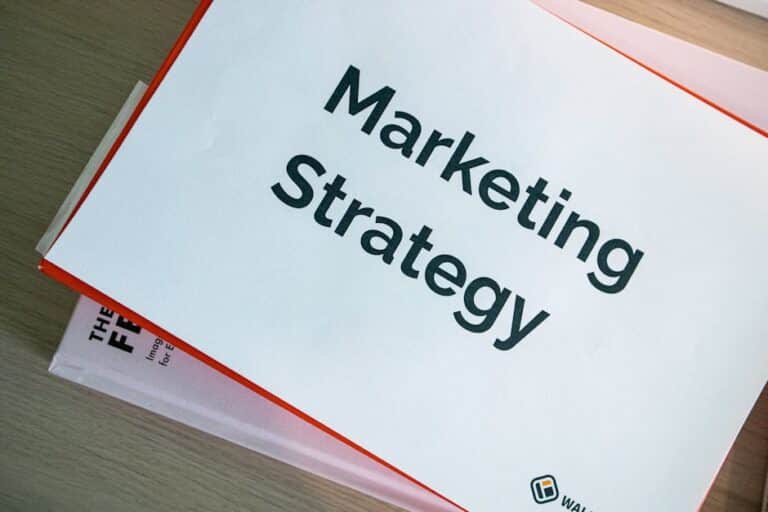Mastering the Simple Email Funnel for Service Providers
In the bustling world of service providers, particularly in Texas, mastering a simple email funnel can be the key to expanding your client base without the hassle of constant social media engagement. This guide aims to demystify the process by explaining the steps involved in setting up an effective email funnel, tailored specifically for service providers looking to grow effortlessly.

Understanding the Basics of an Email Funnel
Before diving into the specifics, it’s crucial to understand what an email funnel is and how it works. Essentially, an email funnel is a series of messages designed to guide potential clients from awareness to conversion, all through the comfort of their inbox. Unlike social media, which often scatters your message among noise and distractions, an email funnel provides a direct and personalized channel. In this way, email funnels help service providers create a more structured journey for their leads, guiding them step-by-step towards becoming paying clients. This journey typically starts with a lead magnet, designed to hook attention and entice an email signup, followed by a series of automated emails—each carefully crafted to nurture, engage, and finally convert the prospects into clients. This strategic narrative not only amplifies client retention but also builds a loyal customer base.
Email funnels, initially intimidating, are essentially logical when distilled into their basic elements. The essence of an effective email funnel revolves around relationship building, fostering dialogue that connects personally. Operating in Texas as a service provider, utilizing personalized emails can set your business apart, resonating far beyond mere automation. Think about segmenting your email list by client needs and preferences. This customization turns your emails into engaging dialogues rather than sales pitches. Over time, this strategy builds trust and establishes you as a dependable industry expert.
Why Choose Email Over Social Media?
While social media has its benefits, emails offer a direct line of communication that feels more personal. This can be especially beneficial for service providers in Texas who want to build stronger relationships with their clients without the clutter of social media. Social media platforms, though far-reaching, often demand constant updates and interactions to maintain visibility. The pressure to ‘stay relevant’ translates into a cycle of content creation that quickly leads to burnout. On the contrary, email marketing requires less frequent updates and can be more effectively planned in advance, allowing you to sync campaigns with your overarching business goals. Emails also provide a means to deliver more detailed information to your audience—something your Instagram or Facebook post could struggle to encapsulate. Consequently, your subscribers receive high-value content that raffirms their decision to engage with your brand.
Furthermore, choosing to harness email funnels as part of your client acquisition strategy aligns well with the increasing consumer preference for meaningful interactions. The format offers you insights into what content your subscribers find appealing through metrics like open rates and click-through rates. This data-driven approach enables you to tweak and optimize your engagement strategies, providing what your clients really want rather than what you assume they need. For service providers looking to get coaching clients without social media, email marketing acts more like a garden where leads are planted, nurtured, and allowed to grow over time. Your relationship with clients deepens as the funnel delivers timely and purposeful content, without the pressures of digital stardom that social media imposes.
Crafting Your Initial Email: Making a Strong First Impression
Your initial email should be welcoming and informative. It’s your first chance to introduce your services, establish credibility, and set the tone for future communication. Make sure it’s engaging yet concise. Consider this your digital handshake: warm, firm, and leaving a long-lasting impression. An effective first email incorporates a well-crafted subject line to pique curiosity—avoid generic terms and aim for a hook that states value. Upon opening, your email should clearly communicate who you are, what services you offer, and why these services matter to the recipient. Invite them to learn more by clicking on a link to your Mission 9-Line Roadmap, setting the stage for subsequent communications and kindling their interest in deeper engagement. First impressions matter, and in the inbox, your tone should mirror an inviting presence—one that inspires trust and curiosity.
Building Trust Through Consistent Follow-Ups
After the initial email, maintaining a steady flow of communication is vital. Consistent follow-ups help reinforce your brand and keep your services at the forefront of your clients’ minds without being intrusive. Follow-up emails should not only serve to remind clients of your existence but should also build upon the foundation laid by your welcome email. These emails present valuable opportunities to offer insights, share testimonials, and gently guide potential clients towards making a purchase decision. By sending emails with tips, case studies, or relevant industry updates positioned as ‘did you know’ snippets, you illustrate your continued dedication to client education and empowerment. Such a commitment to value not only contributes to trust-building but also naturally elevates your standing as an industry thought leader.
Moreover, establishing a frequency for your follow-ups that keeps you present but not overwhelming is imperative. As a general rule, consider following the 3-2-1 approach: three follow-up interactions spaced individually across two days, then another after a week. Tailor your messages to focus on client pain points and how your service provides relief or advancement. For those skeptical about email effectiveness, a strategic approach can yield leads that snowball into committed clients—proven by countless success stories across industries. The follow-up process, armed with a nurturing touch, ultimately turns a simple email funnel into a powerful engine for client acquisition. Once a sustained relationship is formed, focus can shift to offers and invitations to engage with tangible actions like booking a Clarity Call, transitioning leads towards conversion.
Converting Leads Into Loyal Clients
The ultimate goal of your email funnel is to convert interested leads into loyal clients. By providing valuable content and timely offers, you can encourage potential clients to take action and solidify their relationship with your service. This is where the clever sequencing of your funnel truly matters—ensuring that by the time a prospect receives a conversion-focused email, their interest is already heightened. Use this email to highlight an offer compelling enough to draw a reaction: perhaps exclusive access to a comprehensive guide or a personalized service consultation. Craft this content with precision; every word should aim to reduce friction and eliminate any reservations the prospect may have. Your call-to-action should be clear and direct, inviting them to make the commitment that they are already contemplating.
In addition to offers, implementing persuasive storytelling within your emails can drive conversions by evoking an emotional reaction that presses a reader to act. Real-life case studies and testimonials serve as social proof, reassuring hesitating leads about the consistent value your service provides. Another tipping point in nurturing loyalty is the post-conversion communication cycle. Together with an onboarding sequence, this reinforces the client’s decision positively and sets them on a path of retained continued engagement. Deliver personalized follow-up emails to further cement their confidence in using your services, nurturing loyalty from an informed and appreciative standpoint. Such a transition from lead to client isn’t transactional; it’s transformative in cultivating a relationship that defaults toward satisfaction and repeated patronage.
Analyzing and Optimizing Your Funnel for Better Results
A successful email funnel isn’t set in stone. Regular analysis and optimization are necessary to enhance its performance. By keeping an eye on key metrics like open rates, click-through rates, and unsubscribe rates, you can gather insights into what works and what doesn’t. Use these insights to refine not only the content but also the timing and frequency of your emails, ensuring they resonate well with your audience. Through A/B testing, you can experiment with varying email subject lines, content formats, and call-to-action nuances that might drive better results. It’s about staying agile, learning from subscriber behavior patterns, and reacting to feedback to continue evolving your strategy. Doing so ensures your email funnel remains as effective as possible, increasing conversions with each iteration.
Beyond surface-level tweaks, ensure that you’re always aligning your email funnel with the broader goals of your business. What’s more, being mindful of any shifts in client needs or industry trends can open the door for deeper improvements that keep your email marketing efforts both forward-thinking and reactive. For instance, incorporating automation tools to facilitate segmentation helps in attaining precision marketing that reflects individual subscriber interests. Don’t hesitate to incorporate multimedia elements such as videos or infographics to offer refreshing bursts of interactive engagement in your emails. As you continue refining your funnel, capitalize on these advances to maintain a robust system that works for you—the Mission Start Challenge could greatly enhance your understanding and implementation strategies. Each revision serves as another step forward, forging a pathway to heightened success while also preserving the client-provider rapport essential for long-term business resilience.
Final Thoughts on Your Email Funnel Journey
By implementing a simple email funnel, Texas service providers can enjoy a steady stream of potential clients, all without the overwhelm of managing multiple social media accounts. With a strategic approach tailored to your specific audience, you’ll find yourself better connected with your clients. Start small, keep testing, and watch as your business grows more organically and efficiently. And remember, if you need guidance in setting up this system, we welcome you to explore our Mission Start Challenge to get personalized support.






